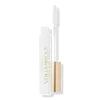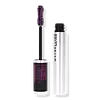What's inside
What's inside
 Key Ingredients
Key Ingredients

 Benefits
Benefits

 Concerns
Concerns

 Ingredients Side-by-side
Ingredients Side-by-side

Water
Skin ConditioningPolybutene
Paraffin
PerfumingPotassium Cetyl Phosphate
EmulsifyingCera Alba
EmollientCopernicia Cerifera Cera
EmollientCopernicia Cerifera Wax
Steareth-2
EmulsifyingCetyl Alcohol
EmollientAlcohol Denat.
AntimicrobialPhenoxyethanol
PreservativeHydroxyethylcellulose
Emulsion StabilisingAcacia Senegal Gum
MaskingPanthenol
Skin ConditioningEthylenediamine/Stearyl Dimer Dilinoleate Copolymer
Skin ConditioningCaprylyl Glycol
EmollientHydrogenated Jojoba Oil
AbrasiveHydrogenated Palm Oil
Emollient2-Oleamido-1,3-Octadecanediol
Skin ConditioningDisodium EDTA
BHT
AntioxidantRosa Canina Fruit Oil
EmollientStearyl Alcohol
EmollientMyristyl Alcohol
EmollientPentaerythrityl Tetra-Di-T-Butyl Hydroxyhydrocinnamate
AntioxidantPropylene Glycol
HumectantPropyl Gallate
AntioxidantCitric Acid
BufferingWater, Polybutene, Paraffin, Potassium Cetyl Phosphate, Cera Alba, Copernicia Cerifera Cera, Copernicia Cerifera Wax, Steareth-2, Cetyl Alcohol, Alcohol Denat., Phenoxyethanol, Hydroxyethylcellulose, Acacia Senegal Gum, Panthenol, Ethylenediamine/Stearyl Dimer Dilinoleate Copolymer, Caprylyl Glycol, Hydrogenated Jojoba Oil, Hydrogenated Palm Oil, 2-Oleamido-1,3-Octadecanediol, Disodium EDTA, BHT, Rosa Canina Fruit Oil, Stearyl Alcohol, Myristyl Alcohol, Pentaerythrityl Tetra-Di-T-Butyl Hydroxyhydrocinnamate, Propylene Glycol, Propyl Gallate, Citric Acid
Water
Skin ConditioningPotassium Cetyl Phosphate
EmulsifyingParaffin
PerfumingEthylene/Va Copolymer
Emulsion StabilisingCopernicia Cerifera Cera
EmollientStyrene/Acrylates/Ammonium Methacrylate Copolymer
Cera Alba
EmollientSynthetic Beeswax
Emulsion StabilisingBis-Diglyceryl Polyacyladipate-2
EmollientPolybutene
Cetyl Alcohol
EmollientSteareth-20
CleansingGlyceryl Dibehenate
EmollientSteareth-2
EmulsifyingPhenoxyethanol
PreservativeSilica
AbrasiveHydroxyethylcellulose
Emulsion StabilisingAcacia Senegal Gum
MaskingTribehenin
EmollientCaprylyl Glycol
EmollientGlyceryl Behenate
EmollientSodium Dehydroacetate
PreservativeHydrogenated Jojoba Oil
AbrasiveHydrogenated Palm Oil
EmollientPropylene Glycol
HumectantDisodium EDTA
Butylene Glycol
HumectantRayon
Sodium Laureth Sulfate
CleansingPentaerythrityl Tetra-Di-T-Butyl Hydroxyhydrocinnamate
AntioxidantPvp
Emulsion StabilisingMethylparaben
PreservativeTetrasodium EDTA
Potassium Sorbate
PreservativeBHT
AntioxidantCI 77007
Cosmetic ColorantCI 77266
Cosmetic ColorantCI 77491
Cosmetic ColorantCI 77492
Cosmetic ColorantCI 77499
Cosmetic ColorantCI 77891
Cosmetic ColorantMica
Cosmetic ColorantCI 75470
Cosmetic ColorantCI 77288
Cosmetic ColorantCI 77742
Cosmetic ColorantCI 77510
Cosmetic ColorantCeramide AP
Skin ConditioningWater, Potassium Cetyl Phosphate, Paraffin, Ethylene/Va Copolymer, Copernicia Cerifera Cera, Styrene/Acrylates/Ammonium Methacrylate Copolymer, Cera Alba, Synthetic Beeswax, Bis-Diglyceryl Polyacyladipate-2, Polybutene, Cetyl Alcohol, Steareth-20, Glyceryl Dibehenate, Steareth-2, Phenoxyethanol, Silica, Hydroxyethylcellulose, Acacia Senegal Gum, Tribehenin, Caprylyl Glycol, Glyceryl Behenate, Sodium Dehydroacetate, Hydrogenated Jojoba Oil, Hydrogenated Palm Oil, Propylene Glycol, Disodium EDTA, Butylene Glycol, Rayon, Sodium Laureth Sulfate, Pentaerythrityl Tetra-Di-T-Butyl Hydroxyhydrocinnamate, Pvp, Methylparaben, Tetrasodium EDTA, Potassium Sorbate, BHT, CI 77007, CI 77266, CI 77491, CI 77492, CI 77499, CI 77891, Mica, CI 75470, CI 77288, CI 77742, CI 77510, Ceramide AP
Ingredients Explained
These ingredients are found in both products.
Ingredients higher up in an ingredient list are typically present in a larger amount.
Acacia Senegal Gum has skin soothing, thickening, and formulation stabilizing properties. It comes from the Acacia tree that is native to sub-Saharan Africa.
BHT is a synthetic antioxidant and preservative.
As an antioxidant, it helps your body fight off free-radicals. Free-radicals are molecules that may damage your skin cells.
As a preservative, it is used to stabilize products and prevent them from degrading. Specifically, BHT prevents degradation from oxidation.
The concerns related to BHT come from oral studies; this ingredient is currently allowed for use by both the FDA and EU.
However, it was recently restricted for use in the UK as of April 2024.
Learn more about BHTCaprylyl Glycol is a humectant and emollient, meaning it attracts and preserves moisture.
It is a common ingredient in many products, especially those designed to hydrate skin. The primary benefits are retaining moisture, skin softening, and promoting a healthy skin barrier.
Though Caprylyl Glycol is an alcohol derived from fatty acids, it is not the kind that can dry out skin.
This ingredient is also used as a preservative to extend the life of products. It has slight antimicrobial properties.
Learn more about Caprylyl GlycolCera alba is beeswax, or the wax used by bees to make honeycombs. It is a texture-enhancer and emollient. A study from 2003 found beeswax to be a stronger emollient than ingredients such as petroleum jelly.
As an emollient, beeswax helps hydrate the skin by creating a barrier on top. This barrier traps moisture in.
Emulsifiers help prevent ingredients from separating. This helps create consistent texture.
The structure of beeswax is mainly long-chain alcohols and the esters of fatty acids.
There are three types of beeswax: yellow, white, and absolute. Yellow is pure beeswax taken from the honeycomb. White beeswax is created by filtering or bleaching yellow beeswax. Absolute beeswax is created by treating beeswax with alcohol. Beeswax used in cosmetics are purified.
Beeswax has been used throughout history and even in prehistoric times. Some common uses for beeswax still used today are making candles, as a waterproofing agent, and polish for leather.
Learn more about Cera AlbaCetyl Alcohol is a fatty alcohol. Fatty Alcohols are most often used as an emollient or to thicken a product.
Its main roles are:
Though it has "alcohol" in the name, it is not related to denatured alcohol or ethyl alcohol.
The FDA allows products labeled "alcohol-free" to have fatty alcohols.
Learn more about Cetyl AlcoholThis ingredient comes from a palm tree native to Brazil. This ingredient is used to thicken texture and leaves behind a film when applied.
Disodium EDTA plays a role in making products more stable by aiding other preservatives.
It is a chelating agent, meaning it neutralizes metal ions that may be found in a product.
Disodium EDTA is a salt of edetic acid and is found to be safe in cosmetic ingredients.
Learn more about Disodium EDTAHydrogenated Jojoba Oil is created from the process of converting jojoba oil to a solid or semi-solid. Jojoba oil has occlusive and emollient properties, making it a great hydrator.
Due to the solid structure of this ingredient, it provides abrasive or exfoliating properties.
This ingredient may not be fungal acne safe.
Learn more about Hydrogenated Jojoba OilHydrogenated Palm Oil is an oil and isn't fungal acne safe.
Hydroxyethylcellulose is used to improve the texture of products. It is created from a chemical reaction involving ethylene oxide and alkali-cellulose. Cellulose is a sugar found in plant cell walls and help give plants structure.
This ingredient helps stabilize products by preventing ingredients from separating. It can also help thicken the texture of a product.
This ingredient can also be found in pill medicines to help our bodies digest other ingredients.
Learn more about HydroxyethylcelluloseParaffin is a solid created from petroleum. The term 'paraffin' can also refer to either
petroleum jelly or mineral oil.
It has natural occlusive properties which can worsen oily skin. Due to its petrolatum base, this ingredient is not fungal-acne safe.
Pentaerythrityl Tetra-Di-T-Butyl Hydroxyhydrocinnamate (long name, huh?) is a synthetic antioxidant.
It is used to help stabilize other antioxidants or prevent the color from changing in a product.
As an antioxidant, it helps fight free-radical molecules. Free-radical molecules are capable of damaging our cells and other genetic material. Thus, antioxidants may reduce the signs of aging.
This ingredient is oil-soluble.
Learn more about Pentaerythrityl Tetra-Di-T-Butyl HydroxyhydrocinnamatePhenoxyethanol is a preservative that has germicide, antimicrobial, and aromatic properties. Studies show that phenoxyethanol can prevent microbial growth. By itself, it has a scent that is similar to that of a rose.
It's often used in formulations along with Caprylyl Glycol to preserve the shelf life of products.
Polybutene is used to help control the viscosity of a product. This just means it helps adjusts the texture.
It is a polymer and does not get absorbed into the skin due to its large size.
Studies found this ingredient did not irritate skin in concentrations below 15%.
Learn more about PolybutenePotassium Cetyl Phosphate is the potassium salt of a mixture. This mixture consists of the esters from phosphoricacid and cetyl alcohol.
Potassium Cetyl Phosphate is an emulsifier and cleansing agent. Emulsifiers help stabilize a product. It does this by preventing certain ingredients from separating.
As a cleansing agent, Potassium Cetyl Phosphate helps gather oils, dirts, and pollutants from your skin. This makes it easier to rinse them away with water.
Learn more about Potassium Cetyl PhosphatePropylene Glycol is an odorless, colorless liquid. As a humectant, it helps skin retain moisture. It also aids in delivering active ingredients.
Another role of this ingredient is preventing a product from melting or freezing. Propylene glycol also adds antimicrobrial properties to a product, elongating product lifespan.
This ingredient is considered an organic alcohol and commonly added into both cosmetics and foods.
Those with sensitive skin or conditions may develop a rash when using this ingredient.
Learn more about Propylene GlycolSteareth-2 is a waxy compound used to emulsify ingredients. It is created from polyethylene glycol and stearyl alcohol.
The 2 stands for the number of ethylene oxide units used to create this ingredient.
Water. It's the most common cosmetic ingredient of all. You'll usually see it at the top of ingredient lists, meaning that it makes up the largest part of the product.
So why is it so popular? Water most often acts as a solvent - this means that it helps dissolve other ingredients into the formulation.
You'll also recognize water as that liquid we all need to stay alive. If you see this, drink a glass of water. Stay hydrated!
Learn more about Water